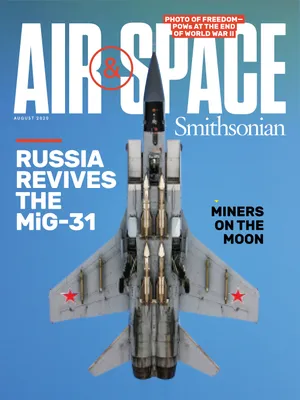A Woman’s Right to Fly and Fight
In 1993, before the Air Force permitted women to fly in combat, new pilot Jeannie Flynn requested the F-15.
:focal(1575x1143:1576x1144)/https://tf-cmsv2-smithsonianmag-media.s3.amazonaws.com/filer/49/bd/49bd5a6c-41d4-421d-a3e7-7f1f70507219/35a_aug2020_openwithtbirds_live.jpg)
A 1994 photograph shows a 27-year-old Jeannie Flynn in an F-15E Strike Eagle, just as she officially became the first U.S. Air Force female fighter pilot accepted for combat. She is sitting in the cockpit she earned—then fought for.
To get to that cockpit, Flynn, who is now Jeannie Leavitt, had to prove a lot of people wrong, including the military’s top leadership. But the image she projects in the photo is more strength than swagger. She is determined, but not defiant. That determination would serve Leavitt well during the next two and a half decades, when she climbed to the highest ranks of the U.S. Air Force.
“I realize not every person wanted this to happen,” she told reporters in 1993. “But I realize that’s also irrelevant.”
By then, she had come to understand that the price of doing what she loved—and was very good at—was the unyielding spotlight her accomplishments attracted. Even if she did not embrace the role of pioneer, she would eventually learn to accept it.
Leavitt is now a two-star general based in San Antonio, Texas, where until recently she commanded the Air Force recruiting services. During my interviews with her in the spring, she spoke with the well-honed cadences of someone who has spent her professional life in the public eye. But she was also friendly and animated, especially when discussing her favorite airplane, the F-15.
The attention started when Leavitt was going through pilot training at Laughlin Air Force Base in Texas. When it became clear she would graduate number one in her class, in 1993, entitling her to first choice of the aircraft she would fly, everyone began to talk. What would happen, if, as she wanted, she decided to pick a fighter?
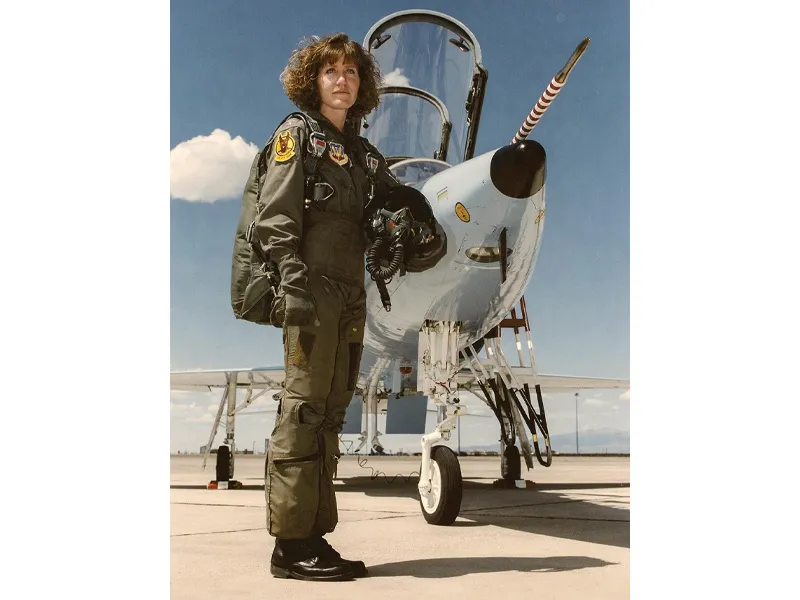
“All hell broke loose,” says Martha McSally, a U.S. senator from Arizona who was then a flight instructor in the Cessna T-37 at Laughlin. “People [were] totally supportive of her generally (‘Oh, she’s so great, she’s top of the class’), but as soon as she was going to buck the system—or think about bucking the system—I remember a lot of pressure, a lot of denigration, a lot of really trying to clamp down on her to pressure her not to do that.”
Leavitt characterized the chatter around her as “a lot of unsolicited advice.”
All but a few of her instructors had warned her that selecting a fighter jet would characterize her as a troublemaker and jeopardize her Air Force career. One by one, her commanding officers had told her that while U.S. law had changed to allow women to fly in combat, Department of Defense policy had not.
Though Leavitt knew the policy would eventually have to change, she did not know when. About six months before she got to Laughlin, Air Force Chief of Staff Merrill McPeak had made his own position clear, telling a congressional committee that he would choose a less-qualified male pilot over a highly qualified female pilot to fly with him.
When Leavitt stood up to announce her choice in the auditorium at Laughlin, she knew the answer would be no. But she did it anyway. She said she wanted to fly the F-15E, which at the time was the newest fighter variant in the Air Force inventory. Instead, she was assigned to fly refueling tankers.
A few months later, she received a call from Air Force leadership. Under newly elected President Bill Clinton, Defense Secretary Les Aspin would soon announce he would allow women to fly in combat. Leavitt was about to become a feminist icon.
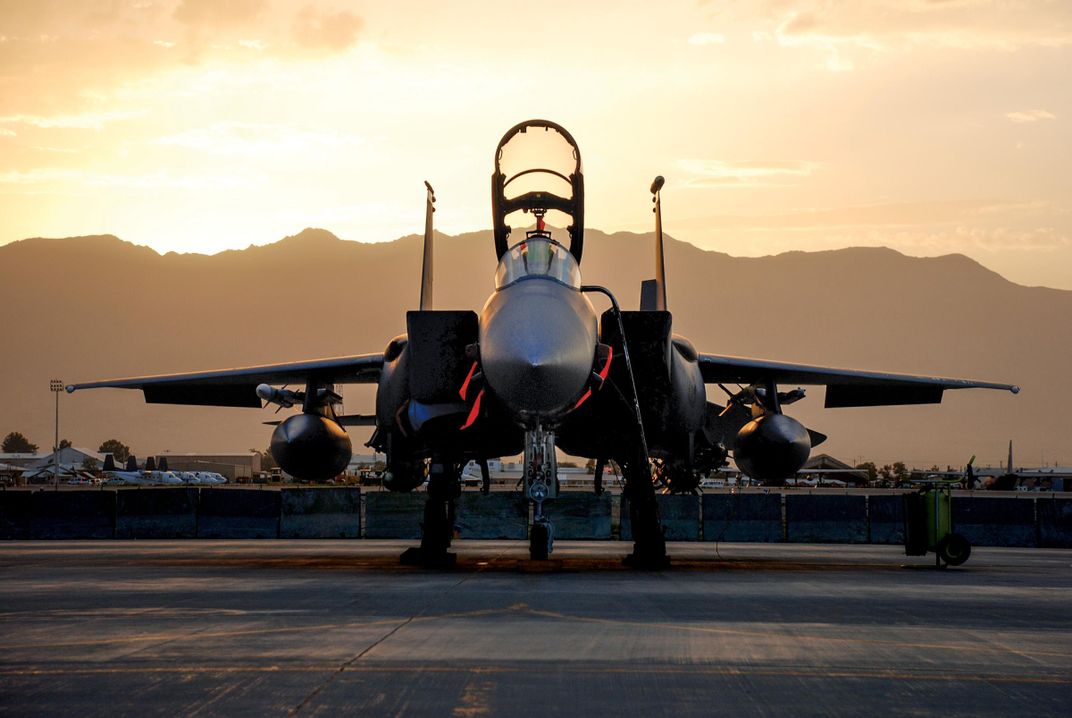
At a Pentagon news conference on April 28, 1993, two other women joined Leavitt on stage. Both McSally and Sharon Preszler, a C-21 cargo pilot, had sought to fly fighters when they had completed pilot training a few years earlier. The three women stood next to McPeak, who had earlier said that while he had opposed the change, there was “always a small chance” he was wrong.
The women fielded questions about whether they had the physical stamina to compete one on one with men, whether women had the temperament to kill in combat, why they would even want to fly a fighter jet, and how they would deal with harassment and hostility from their fellow airmen.
One question was directed at Leavitt in particular. A reporter asked if by going into fighter training so soon, she was “leapfrogging” over qualified men. When she tried to explain that she was following the same process as everyone else, the reporter asked McPeak to step in and clarify. “Jeannie graduated number one in her class,” he said. “She’s been in a holding pattern for six months. She’s not leapfrogging anyone. She’s been delayed.”
It was an acknowledgment from the man who had tried to stand in her way that the system that had initially prevented her from becoming a fighter pilot was unjust. The question of female fighter pilots had been settled—as a matter of law and policy. It was now time for the women to prove themselves.
Over the next two decades, the three women would rack up a long list of firsts, with Leavitt leading the way. That July, she began training in the F-15E at Luke Air Force Base in Arizona. Leavitt graduated from fighter training in April 1994 and went on to her first active-duty assignment at Seymour Johnson Air Force Base in North Carolina. There she was given the call sign “Tally.”
She declined to share the story of how that happened, saying only that it came from “Tally Ho,” Air Force lingo for spotting an enemy aircraft. “It’s usually for doing something silly,” she says. “I’ll just leave it at that.”
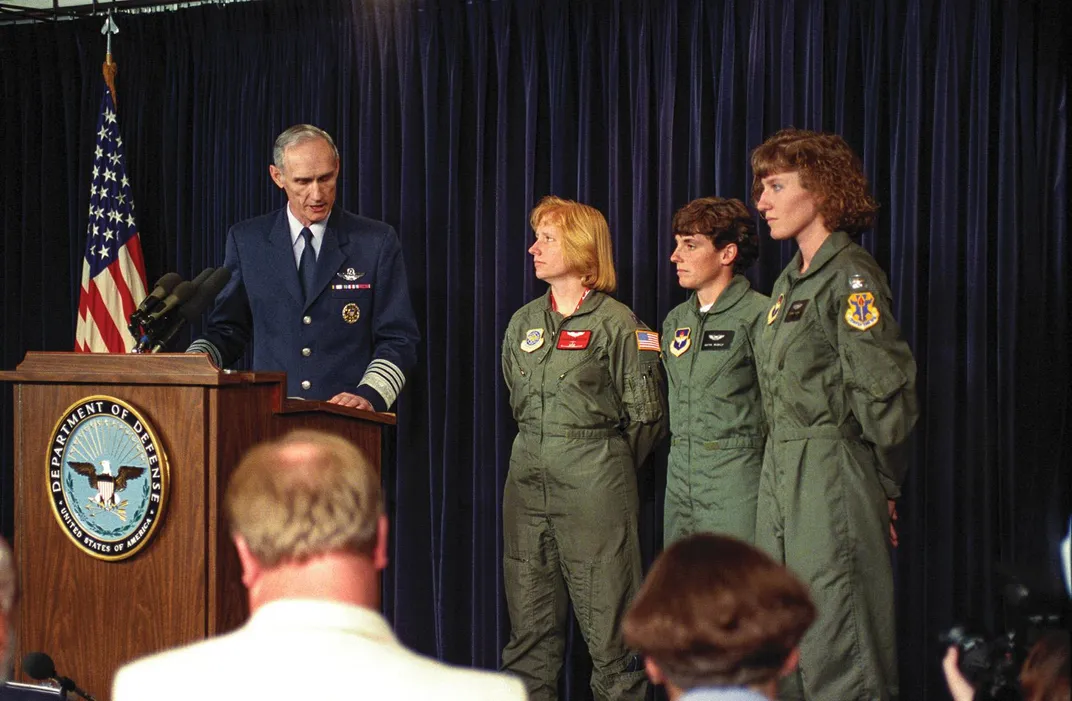
McSally, an A-10 pilot, would be the first to deploy in combat and the first to command an A-10 squadron. Leavitt was the first to graduate from—and teach at—the Air Force’s elite weapons school, and later to command a combat fighter wing. Preszler went on to fly F-16s: the first woman to train, deploy, and teach in the single-seat, single-engine fighter.
But though they all became well-known in the military community, each woman was left alone to cope with the challenges ahead. They each started training at different times, in different aircraft, and at different bases.
Preszler and McSally both mentioned instances when senior officers refused to shake their hands or turned their backs in response to a greeting. Says Leavitt: “Some men were subtle with their lack of support, while a couple were outwardly hostile toward me. The good news is that some of the men who were initially opposed to having female pilots in a fighter squadron eventually changed their minds once they saw that we were competent pilots.”
“It didn’t help that our leader at the top had indicated lack of support,” says McSally. “Leadership matters. Culture matters—it sets the stage. Especially during the early days of training, where everybody was watching us, and there were just some jerks who were going to try to take away your dream.”
Their commanders were also paying close attention to how well the three women were doing. “The leadership was always watching you,” says Preszler. “So wherever you were, they are sending reports to all the generals in the Air Force, talking about how you are doing. You just had extra scrutiny—walking into places where you know there’s people who don’t want you. That’s not the most healthy environment.”
Some of the difficulties were more practical. Flightsuits and the survival gear essential to a fighter pilot’s airborne comfort and safety were all designed to fit men. Preszler said she flew for weeks not knowing that her G-suit sat too high on her torso, bruising her ribs every time she went in the air. When she finally asked a fellow pilot how he coped with the pain, he looked at her blankly.
Leavitt did not learn that the Air Force had begun making flightsuits designed for women until she became commander of the recruiting services in 2018. “My timing was such that I tried very hard just to blend in,” says Leavitt. “I didn’t identify the challenges, I just dealt with them. Good on the women who followed later who said, ‘Wait a minute, these flightsuits don’t actually fit us.’ ”
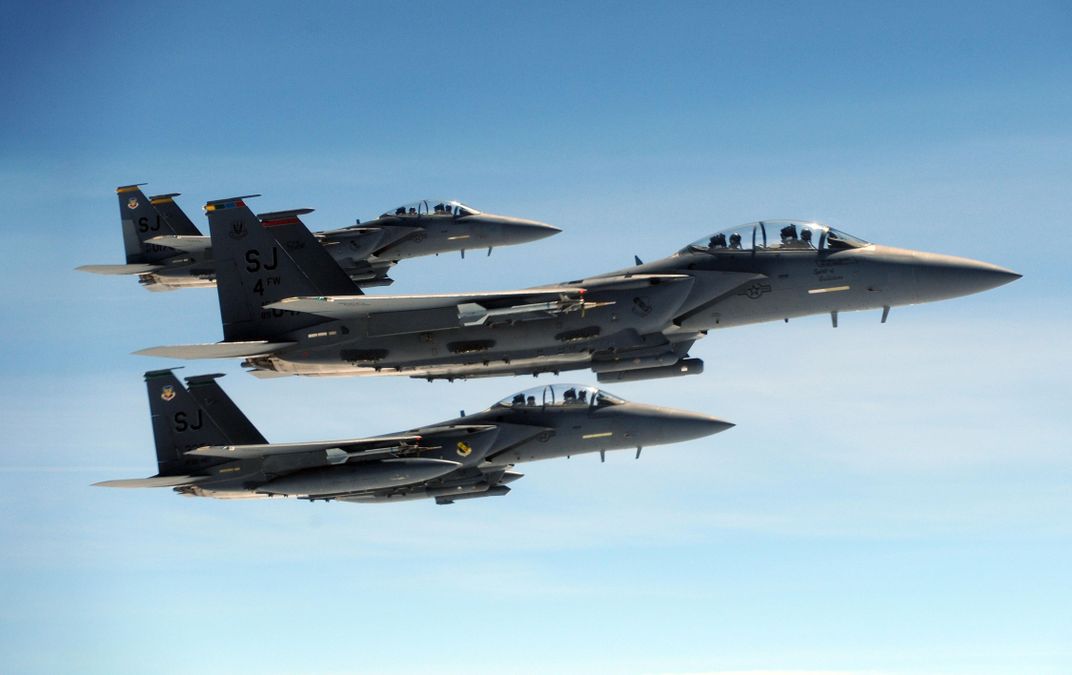
By the time Leavitt became the first woman to enter the fighter track at the Weapons Instructor Course—an Air Force flying school equivalent to the U.S. Navy’s Top Gun and available to only the most talented aviators—being a pioneer had become familiar territory. Says Leavitt: “It was like any place where I was the first. There were people who didn’t want to see women there. There were people who were waiting to see how I’d do.”
When she graduated in 1998, she had grown tired of being separated out from her male colleagues and put in front of cameras for news conferences every time she broke a barrier. “It’s a hard program for anyone,” says Leavitt. “It is an incredibly challenging program. That was why, at the end, I really was opposed to any kind of attention focused on me. Yes, I graduated, but everyone else who was graduating with me worked just as hard, and I didn’t think it was appropriate, given the nature of that program, to highlight me.”
It was her turn to tell the Air Force no. (There were no press releases or news conferences highlighting her graduation.)
Leavitt is now a command pilot, an Air Force designation that means she has logged more than 3,000 hours. That time includes more than 300 hours in combat while stationed in Iraq and Afghanistan. She says her most memorable combat missions are the ones in which she flew the F-15 to support ground troops. These close-air support missions, which capitalized on the F-15E’s low-altitude capabilities (a terrain-following radar and a digital moving map of the ground below), helped protect U.S. soldiers who were taking fire or whose battlefield positions were about to be discovered by enemy scouts.
The first time Leavitt flew in enemy territory, knowing that people on the ground wanted to shoot her out of the sky, was “a little surreal.” But her Air Force training kicked in. “Your adrenaline gets going and your heart rate increases,” says Leavitt. “But you remember what you need to do because the training is so realistic.” Asked if she worried about her own safety, Leavitt says: “I didn’t typically think about my life being in danger because I felt like the troops on the ground were so much more vulnerable.”
Though the F-15E is capable of flying at Mach 2.4, the air-to-ground missions Leavitt flew didn’t require such speed. Sometimes, however, she got to fly fast while enforcing the no-fly-zone in southern Iraq. “We would occasionally go supersonic when we started air intercepts,” she says, “but the adversary aircraft always turned away well short of the border.”
Leavitt believes in the F-15. “I think in the case of the F-15E, the crew concept with two people [pilot and weapon systems officer] works very well,” she says. “We have so much information being fed into the airplane with all the different sensors and the data link. It helps you be more effective in that airplane when you have a crew that works together.”
Leavitt’s respect for the F-15 makes for sometimes spirited debates with her husband, who is a retired Air Force F-16 pilot. Says Leavitt: “When it comes to discussions over which airplane is better or single-seat versus two-seat, we just agree to disagree.”
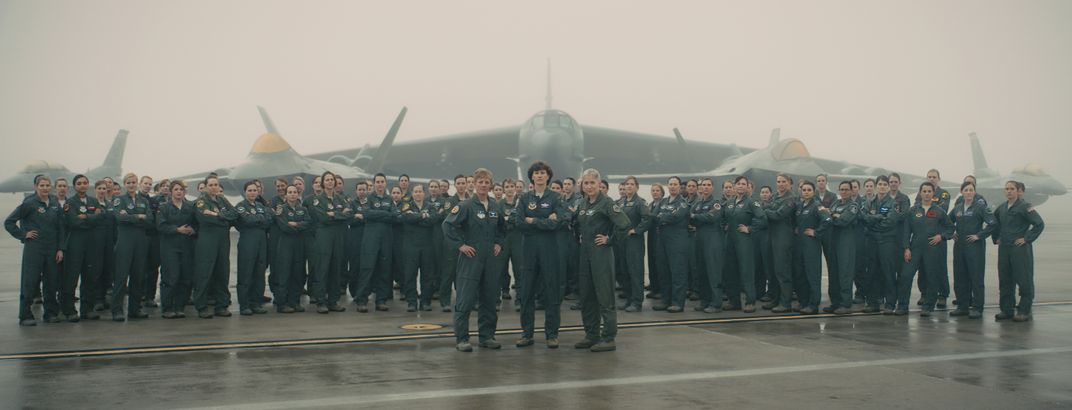
Though the Air Force has made advancements in designing gear for female aviators, in some ways the service has changed only marginally since Leavitt first sat in a fighter cockpit.
Women are still only a small fraction of Air Force fighter pilots. Currently, there are only 85 in the entire Air Force, making up three percent of the total, according to Air Force data. The number has only nudged upward in the last 20 years, from one percent in 2000. The percentage of female air personnel overall has also remained roughly level, climbing from just 19 to 20 percent since then.
In her role as recruiting services commander, Leavitt made a priority of increasing diversity in the Air Force by reaching out to women and minority groups. “There is huge interest from the Air Force to be a very diverse force,” says Leavitt. “We want a mix of backgrounds. We want a mix of races, genders. We don’t want to all look the same. We don’t want to all think the same—we want the diversity of thought. We know that an adversary of the future is going to have potentially similar capabilities to us so we are going to beat them with being able to out-think them.”
For Leavitt, who in June became the operations and communications director for the Air Education and Training Command, the reach for diversity now includes embracing the attention that comes with being a pioneer. “If I inspire any young woman, young man to work hard and dream big and accomplish more than they thought possible, then that’s well worth me telling the story,” she says. It has now become easier for her to relinquish her privacy because she views all those years of breaking down barriers as a story that belongs not only to her but to the entire Air Force.
